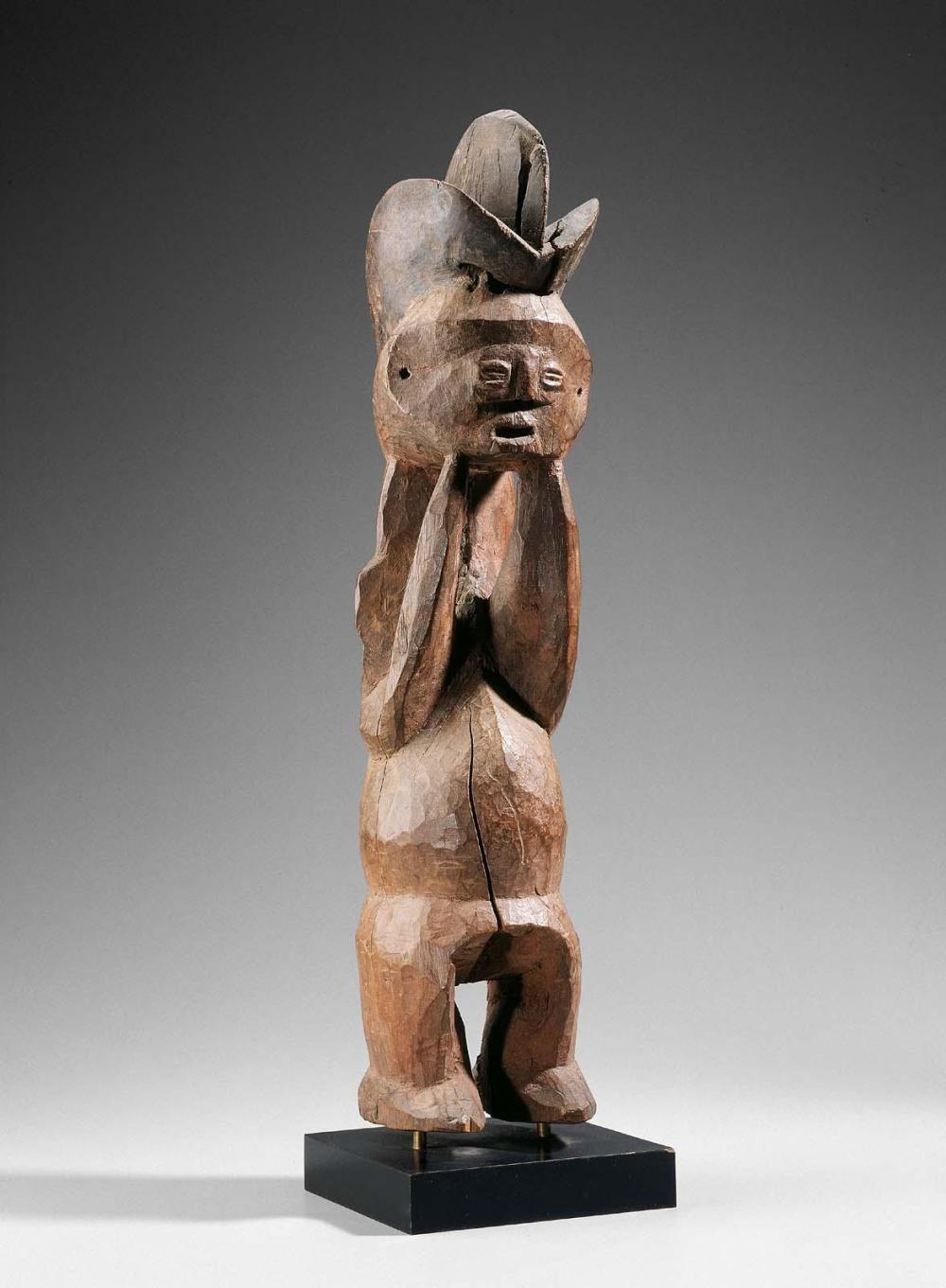Advanced Search
This figure once stood on a table with six or seven other sculptures inside a shrine, or was set outside the door to announce the sacred space within. Its earrings and loincloth are now missing, but the high crests of the hairstyle nod to fashion in the region in the early twentieth century. The figure’s mouth is open, as if in speech. Faceted planes set off the expressive face from the hairline, ears, and neck of the abstracted figure. The arms and hands curve upward to touch the chin in an unusual gesture associated with the art of the Hungaan people.
The Hungaan migrated north from present-day Angola to what is now the Democratic Republic of the Congo sometime before the nineteenth century. Able blacksmiths, they were welcomed into existing villages founded by other peoples near the Kwilu River. During their migration, some Hungaan families joined with Mbala clans, and the hairstyle reflects a popular Mbala look. The bulb-shaped torso is also common in Mbala art. Just as Hungaan smiths shared their skills in their new communities, Hungaan artists borrowed forms found in the art of their neighbors.
Shrine figure
Hungaan
20th century
Object Place: Kwilu river area, Democratic Republic of the Congo
Medium/Technique
Wood, pigment
Dimensions
60.96 cm (24 in.)
Credit Line
Gift of William E. and Bertha L. Teel
Accession Number1994.409
CollectionsContemporary Art, Africa and Oceania
ClassificationsSculpture
This figure once stood on a table with six or seven other sculptures inside a shrine, or was set outside the door to announce the sacred space within. Its earrings and loincloth are now missing, but the high crests of the hairstyle nod to fashion in the region in the early twentieth century. The figure’s mouth is open, as if in speech. Faceted planes set off the expressive face from the hairline, ears, and neck of the abstracted figure. The arms and hands curve upward to touch the chin in an unusual gesture associated with the art of the Hungaan people.
The Hungaan migrated north from present-day Angola to what is now the Democratic Republic of the Congo sometime before the nineteenth century. Able blacksmiths, they were welcomed into existing villages founded by other peoples near the Kwilu River. During their migration, some Hungaan families joined with Mbala clans, and the hairstyle reflects a popular Mbala look. The bulb-shaped torso is also common in Mbala art. Just as Hungaan smiths shared their skills in their new communities, Hungaan artists borrowed forms found in the art of their neighbors.
ProvenanceFirst quarter of the 20th century until about 1978, said to have belonged to the family of a missionary, Belgium; about 1978, sold by this family to a private collector, Belgium. 1988, Marc Leo Felix (dealer), Brussels; May, 1988, sold by Felix to William and Bertha Teel, Marblehead, MA; 1994, partial gift of William and Bertha Teel to the MFA; 2014, acquired fully with the bequest of William Teel to the MFA. (Accession Dates: January 26, 1994 and February 26, 2014)



